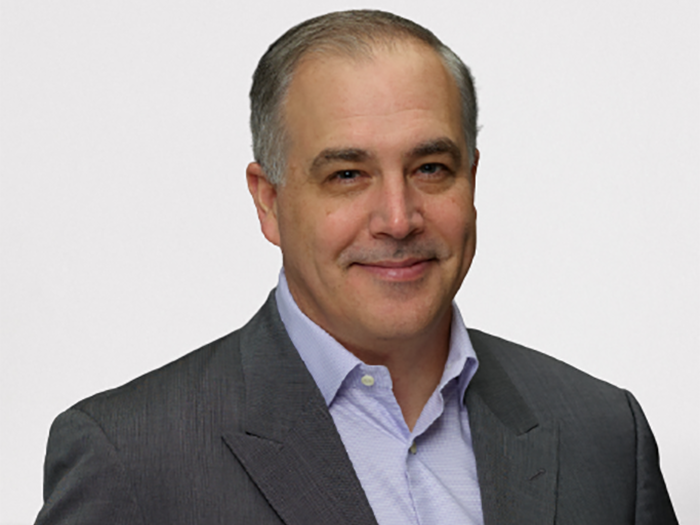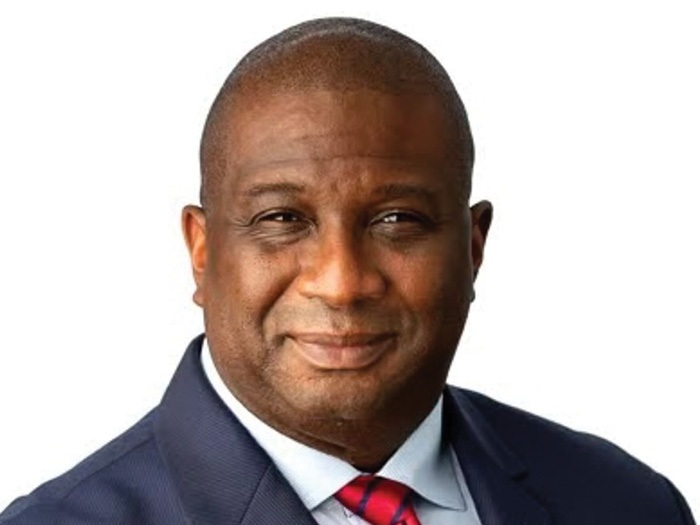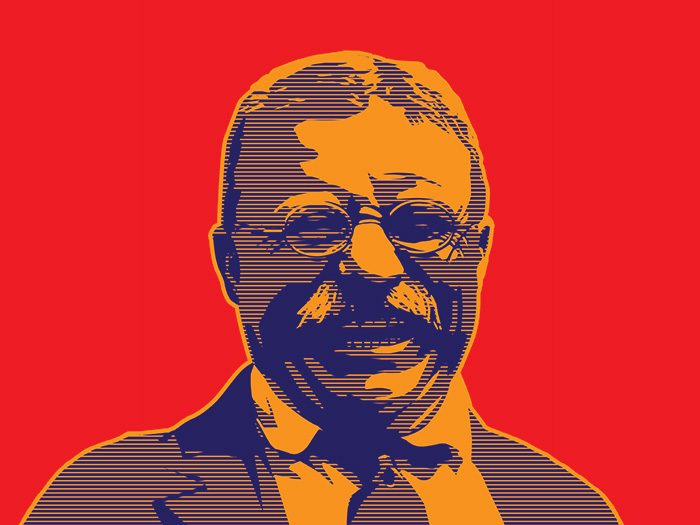Charles Taylor’s New U.S. CEO Cullen Sophy Discusses P&C Trends and How Mergers and Acquisitions Are Affecting the Insurance Industry

This month, Charles Taylor promoted Cullen Sophy to the position U.S. CEO of adjusting and technical services, a role he came to after serving as the firm’s executive vice president of property for the past four years.
In his previous role, he aided in expanding Charles Taylor Adjusting’s U.S. property team. Now, the firm has been expanding its capabilities through acquisitions and has been attacking the talent gap with a focusing on developing young talent and promoting from within.
Sophy sat down with Risk & Insurance® to discuss his career journey, his goals for his new position, trends in property and casualty markets and how mergers and acquisitions are affecting the insurance industry. This interview has been edited for length and clarity.
Risk & Insurance: What was your first job?
Cullen Sophy: My first job in the insurance space was on the carrier side, starting at Safeco Insurance. This was way back though, pre-American States and Liberty Mutual acquisitions.
I have been through the gamut on the insurance carrier side. I started handling claims at the desk level, property and casualty, and then went on to manage catastrophe and commercial teams at Safeco. During the 12 years spent there, I was involved in two integrations, both the American States acquisition and then the integration with Liberty Mutual.
R&I: How did you come to your current position?
CS: I feel like it’s been a long and storied career. I moved from the insurance side to the client side, I was the risk manager at Nike. There I worked with several independent adjusting firms, so it was a natural fit to move to the independent adjusting space myself.
I’ve now worked on the independent adjusting side for the better part of a decade. Previous to my role as CEO, I was the executive vice president of property and some of our technical services as well, and transitioned into the CEO role from the executive vice president role.
It made a lot of sense. We promoted from within, which is something we firmly believe in given all the talent Charles Taylor has internally. Being involved in a lot of the company’s operations, it just made a lot of sense to transition to CEO of the U.S. operations.
R&I: What’s the biggest challenge you’ve faced in your career?
CS: I don’t think we have enough time in this interview to address all of those. I think the COVID-19 pandemic was the biggest challenge in recent memory. It changed everything.
In the insurance space, we like to pride ourselves on knowing that we need to plan for every potential outcome, and no one saw this coming. There was a complete shutdown. Adjusters who were used to traveling and being on the road and being in front of clients inspecting properties — all that was completely shut down.
We had to almost overnight switch to a complete virtual environment — that’s virtual adjusting, virtual policy review, virtual estimate writing. That was completely off everyone’s grid.
And yet for an insurance industry that maybe had some technology challenges previous to the pandemic, I feel the entire community adapted very, very well.
I know at Charles Taylor we’ve been ahead of the curve. We were able to utilize technology. Our adjusters, our engineers and our staff were ready for it. We really had the appetite to adapt to this new technology.
So it was the biggest challenge, and yet I actually would say, it’s been the most exciting thing that’s happened in the last couple of years, to be able to adapt so quickly to that significant change.
R&I: Who has been your mentor(s) and why?
CS: When I was at Nike, I would say Phil Knight himself, who was the CEO of Nike. He really taught a lot about a matrix organization. While almost every company has a hierarchical structure of some kind, it was really the idea that it’s a matrix. You can go to any source to get an answer.
I’ve adopted a lot of that in my career. I appreciate that at Charles Taylor, we take a lot of pride in promoting from within. We have a junior executive committee where our junior adjusters, engineers, accountants, have access and availability with the global CEO to ask questions or promote different ideas. So I took a lot of that from Phil Knight directly at Nike.
When I was at Crawford, Jeff Bowman was the CEO, and I learned a lot from him about how to organize different business units and put these different pieces together.
And then here at Charles Taylor, Vince Cole really taught me a lot about the acquisition process and integration. Which companies make a lot of sense to partner with, and then how we integrate them. It’s one thing to look at a company and say that that would work well here, but it’s another thing entirely to integrate those into one seamless business unit.
R&I: What are your goals as the new U.S. CEO for Charles Taylor?
CS: I want to make sure that my work highlights what we do well, what we do differently, and what separates us from our competition.
The competition in this market is extremely strong. But what separates us from everyone else? I would argue that we have a better culture, we have a better fit for most. But we need to consider what we represent to both internal employees as well as external clients. These considerations work as important building blocks for our future.
My goal is to highlight internal promotions, internal success, and to demonstrate transition plans both internally and externally. That’s probably my first goal.
And then I want to look at our organization’s structure overall and make sure that it makes sense, make sure it’s as flat as possible so that we can see growth across all business lines, and that our employees share in that success. As a flat organization, employees have a lot of opportunity to move and advance and change in their career.
Then, one of the most important things for me is succession planning. We’ve talked about it for years that there’s an aging workforce across all lines of insurance. I’ve created a protégé program here, which is as simple as it sounds. We team up a more senior member of the team, in terms of experience, and we partner them with a fresh new face in the industry, whether they have experience or not.
The protégé program usually takes about three years to graduate and allows the junior employees to truly learn the business. They learn what they like, what works for them, and we build them up. We’re really prioritizing promoting our next generation of talent across all lines.
Those three goals are probably the most important ones right now. There’s a lot of business goals and business planning which are also on my desk, but those are probably the biggest ones.
R&I: I think the talent promotion is something a lot of organizations are really feeling right now.
CS: I think it’s easy to see across all lines, right? You always want to build up that next generation.
One thing I’m really proud of is we actually have the buy-in from our senior stakeholders who have come to us to say: ‘We want to give back. We were given an opportunity, so we want to give back and help grow that next generation.’
It’s interesting to see that now at a lot of universities, they’re offering risk management and insurance programs. So, we’re seeing this new wave of talent come into the industry that we’ve never seen before, and you tie that with these stakeholders that want to offer their services to help grow it. It’s a nice opportunity that has morphed and grown over the last couple of years.
R&I: What trends are you seeing in commercial property and casualty markets?
CS: Technology is the foremost. Technology has changed so much in the last couple of years. Everybody is trying to partner up with any Insurtech coming out. All of us want to be ahead of the curve with new technology, whether it’s virtual estimate writing or drones, which were a big push a couple of years ago. While all that is still important, we need to move faster and even quicker.
I would highlight that global warming has definitely affected the property and casualty space. Every year, the storm indexes show there are more storms, they’re more powerful, they last longer, they’re sitting over water for longer periods of time. I’m sure you remember Superstorm Sandy. It sat for so long. We’re seeing more of that. We’re seeing these bigger and more powerful storms, so we all need to be prepared for that.
And then there’s consolidation. We’re seeing a lot of carriers and brokers consolidating their resources. They’re growing into bigger companies. That’s a trend that we at Charles Taylor are making sure to be ahead of.
We want to have great partnerships with the carriers and the brokers of the world so that we know what may be coming. If there are mergers or acquisitions, we know what may be coming, while remaining close to and talking seamlessly with all parties involved so that we can maintain good relationships and grow our business simultaneously.
R&I: Charles Taylor has been on a bit of an M&A tear. How have your recent acquisitions helped expand the business’s offerings?
CS: We’re really proud of that. Over the years we have remained focused on adding pieces to Charles Taylor that holistically make sense. Whether that means we’re expanding the claims piece of it or adding other services that our clients have specifically asked for, we’ve prioritized expanding our footprint.
For example, we’ve added middle market and smaller commercial services, which has expanded our footprint tremendously across the entire U.S. Now, we can handle a strip mall claim as well as a building collapse because we have dots on a map across the entire United States. We added engineering services and that’s been huge for us, as clients had been asking for that. Both civil, structural, architectural, design, all of that now falls under a Charles Taylor umbrella, and we’re really proud of that.
We want to continue to look at those opportunities. What makes sense for the entire insurance process or what may fall out of a normal claims process, we want to look at every part of that and see if it fits under the Charles Taylor name. Anytime a client comes to us and says, ‘I might have a need in this direction,’ we want to look and see if that fits under the entire scope of what we can offer to a client.
R&I: What are the top concerns clients have brought to Charles Taylor over the past year?
CS: This list seems to be growing constantly as well. Cyber is always a huge concern, and will continue to be so. I think cyber risk blew up over the pandemic. Everybody’s working from home, everybody is online now. And cyber risk has just multiplied exponentially.
We’ve heard feedback from a lot of clients about making sure that we have the expertise to handle those claims. Cyber is a very involved process, so training our staff to understand what the implications of a cyber claim may be has been very important.
I live in California. Ports and terminal risks are a huge concern here. We had a big port backup in L.A., and that impacted so much of the infrastructure. There are transportation risks, products were not getting to consumers. You combine that with the fact that products were sitting on ships, and so they aged out of normal use and production. That’s a huge risk.
And then I would say international risk is another top concern. We’ve all seen, unfortunately, what’s been going on with Russia and Ukraine. But when you talk about international manufacturing, if any country is affected by any number of geopolitical factors, what will happen with manufacturing? How will that come into the U.S.? That’s a huge concern of clients, to make sure that the insurable risks of goods coming into the U.S. is still being addressed.
R&I: What’s next for Charles Taylor? Is there anything you’re excited about or looking forward to?
CS: I would almost answer that by saying what is not on the agenda? I think we’re really going to remain focused on being client-centric. I know everybody says that, but I used to be on the client side. I resonate with what the clients may want to see.
Nowadays, more clients are in a position to have to do more with less. The risk management divisions are shrinking at most of the client firms, and so we, as Charles Taylor, need to offer more. More service or more opportunities for them. So we are looking at how we can complete the risk side for clients. How can we be involved in inspections, whether that’s pre-loss or post-loss? How can we offer more global services to them? While we may service them here in the States, can we service them in Germany? Can we service their every need across the globe?
Simply, what we’re trying to do is complete an entire circle. We’re really, really happy and pleased with our partnerships that we have, but we want to expand those partnerships to be a full suite of offerings to our clients. &










